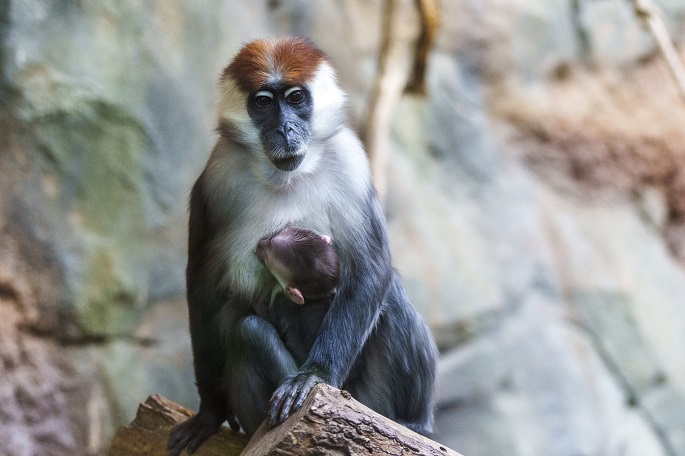Germany's zoos struggling as energy bills soar during Russia's war
Published : 20 Feb 2023, 22:44
As the cost of heating and cooling rises in Europe, zoos in Germany are struggling to find ways to reduce their energy consumption without harming their animals, reported dpa.
The gundi, a stocky rodent from the deserts of north Africa, is used to temperatures of between 25 and 30 degrees Celsius.
But keeping this and other animals at their optimum level of warmth has become eye-wateringly expensive for Europe's zoos as energy prices soar.
Rocketing bills affect Germany in particular, which hurried to wean itself off cheap Russian gas when Moscow invaded Ukraine in February of 2022.
The move left staff at Frankfurt zoo edging down the heating ever so slightly in some areas, though they cool down people first, before other creatures and are keeping a careful eye on both.
"We have lowered the temperatures a bit for the visitors in the show house," says Johannes Köhler, Frankfurt Zoo curator.
The heating in each animal enclosure can be regulated individually, so the zoo keepers can warm up the gundi and other animals if cool air seeps in from the visiting area.
That is good news for other animals from hotter climes such as Komodo dragons, iguanas and turtles, all warm-blooded creatures with slow metabolisms who need their terrariums to be sufficiently warm.
Many animals actually need tropical sun, Köhler says, noting this is a challenge given the cost of heat and lighting. It means there's very little chance to make savings, and consumption of electricity and gas had already increased by 16.3% and 13.9% respectively, compared to the previous year.
Animal welfare is the priority, say all of Germany's zoos, when assessing the challenges posed by increasing costs.
"Many animals are dependent on certain temperatures, so the heating in the animal houses cannot simply be turned down," says the Association of Zoological Gardens (VdZ).
That leaves the zoos struggling with a major financial challenge, particularly those with tropical and subtropical animals, which include many species of fish, amphibians and reptiles. They can only cut back so much, depending on the animals they have.
"We save energy where we can, such as in lighting or administration," says VdZ boss Volker Homes. "We have to see whether we end up needing financial support from the state. What is certain is that we cannot simply pass on the whole extra costs into our admission prices, as our visitors are also greatly affected by the overall increase in costs."
The Berlin zoos and aquarium are saving money wherever possible, keeping windows shut as much as possible and dropping any lighting that is only for effect.
That saves around 15% of energy, says director Andreas Knieriem. "A zoological garden is a major consumer of energy. You can't change that," he says. "We have animals here from tropical and subtropical regions, but also animals like penguins that need it really cold in the summer. There's very little wiggle room."
"It's true that a hippopotamus can cope with water temperatures below 15 degrees Celsius in its pool of about 700,000 litres of water for a short time. Over a longer period of time, however, this is not justifiable," says a Berlin Zoo spokesperson and species conservation coordinator Katharina Sperling.
They are saving money in the lighting in the visitor area at least, she adds.
But running a zoo has become more expensive anyway. Hanover's zoo expects costs to increase in 2023 by a further €300,000 ($319,000) to €400,000. The zoo has been focusing on energy efficiency for several years, a spokesperson says, noting it covers 21% of its electricity needs itself by producing power through a photovoltaic system.
Meanwhile Gelsenkirchen Zoo is making no real changes to operations. "We can't make noticeable savings because that would be at the expense of the animals," says spokesperson Franziska Gerk.
At the tropical house, the zoo cannot just turn down the heat at night, either, as the nocturnal animals need to remain at their natural ambient temperature, she says. Meanwhile it would not make sense to shut down areas where the energy needs are particularly high as the animals would need to be cared for nonetheless.
But at nearby Dortmund Zoo, there are plans to shut the Amazon House after 30 years in operation, as the building would otherwise need to be renovated.
The building uses more than a third of the zoo's overall electricity and gas, due to its often-defective heating and ventilation system, outdated windows and poor insulation, the city says.
The Amazon House has been shut since the pandemic began anyway, to protect the monkeys living there.
Jörg Bumann, managing director of the Gettorf Zoo in Schleswig-Holstein, says alongside heating costs, the price of feed has risen too, due to higher production costs. The zoo sees no other option but to raise ticket prices in spring, though only to cover half of the extra costs, given the fact that the public, too, is feeling the squeeze.
Meanwhile in Erfurt, the zoo has found one way to save money, by converting as much of its lighting as possible to LED technology, which is highly efficient in terms of energy use.


